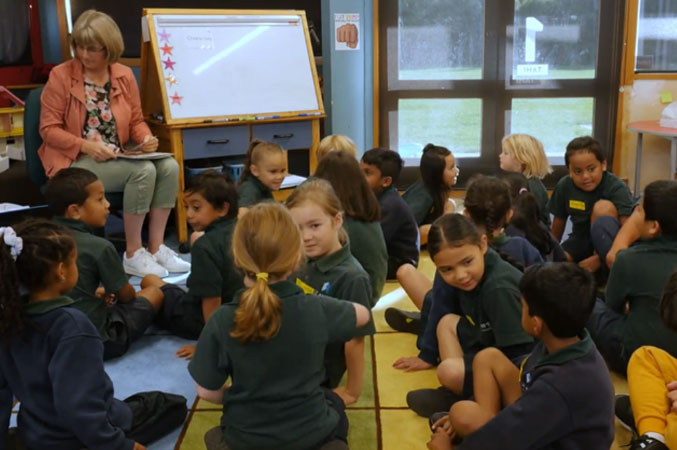
Understanding how our young children who enter school learning English as their second or other language succeed in their early literacy development is critically important. We also need to understand how English literacy teaching practices reflect our improved understanding of the cultural and social importance of bilingualism and indigenous languages such as Te reo Māori.
We developed the BSLA specifically for our New Zealand education context. It is based on the “science of reading” (i.e., robust research evidence as to effective reading instruction and interventions) and promotes a strengths-based and culturally responsive approach to early literacy teaching. It is set within a Multi-Tiered System of Support framework where Tier 1 (universal or class level teaching) and Tier 2 (small group targeted teaching for learners with greater needs) are aligned. This maximises BSLA teaching intensity for children who need more support in acquiring foundational skills in phonic, phoneme awareness, morphology, word decoding, spelling oral narrative and vocabulary skills.
Using a unique matched control design, we paired 1,853 children identified as ELL with 1,835 peers of the same ethnicity, age, gender, and socio-economic background who were not English Language Learners (non-ELL). The ethnicity of our ELL cohort was mostly Asian, 46%, and Pacific, 26%. Their mean age was 65months, gender 53% male, and 82% were from schools in areas of mid -to high socio-economic deprivation (using NZDepIndex).
The data showed 11% of the ELL and 13% of the non-ELL cohorts received approximately 10 weeks of supplementary BSLA Tier 2 (targeted small group) teaching. At the next monitoring assessment (20 weeks post baseline assessment) the ELL cohort showed accelerated growth in listening comprehension, phoneme-grapheme matching and phoneme blending skills, catching up to their non-ELL peers.
This data demonstrating a strong response of ELL to BSLA teaching is very encouraging. It suggests when our junior schoolteachers are well supported to implement research based and culturally responsive early literacy teaching, children in their class who are ELL can quickly develop foundational literacy skills in English. With additional Tier 2 support we can expect many ELL to show accelerated progress, catching up to their peers in some areas of oral language and phoneme awareness during their first year at school.
For full details please see Gillon, G. (2023) Supporting children who are English Language Learners succeed in their early literacy development. Main Report presented at the World Congress of Communication Sciences and Disorders, Auckland, 21 August 2023. https://www.betterstartapproach.com/our-research
It’s no secret that New Zealand schools face increasing pressure to deliver high quality learning…
Schools across Aotearoa can now choose to partner with our Better Start Literacy Approach (BSLA)…
Auckland Zoo has launched New Zealand’s first zoo-based online conservation learning platform- an easily accessible…
A new initiative is hoping to improve student handwriting throughout Aotearoa New Zealand, and benefit…
A North Island high school has replaced bulky metal key sets for single electronic access…
Investing in covered outdoor spaces requires careful consideration of various factors to ensure their effectiveness,…
This website uses cookies.